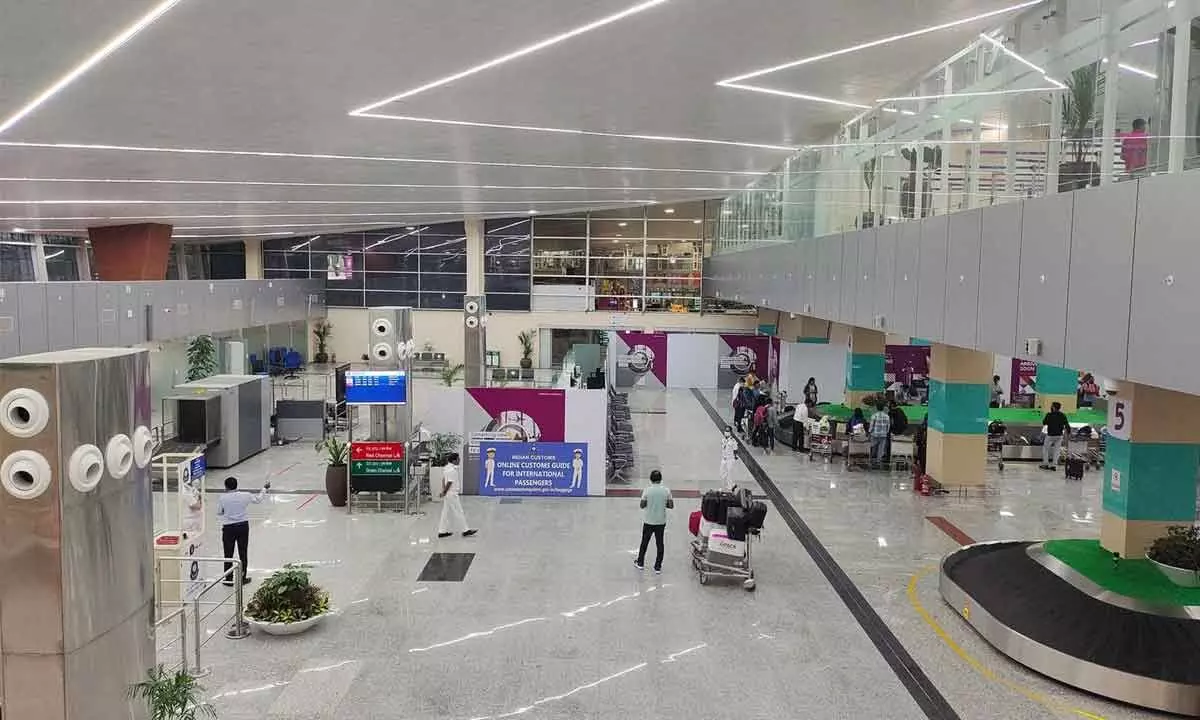Live
- Govt plans to establish offshore Johns Hopkins University Campus in India
- Goa Aces clinch Indian Racing League title
- Study finds how hormone therapy can reshape the skeleton
- High-street fashion players looking at India for manufacturing: Report
- Shreyas Iyer to lead Mumbai as Prithvi Shaw returns for Syed Mushtaq Ali Trophy
- 'Failed to resolve crisis': NPP withdraws support from BJP govt in Manipur
- Chennai: Actress Kasturi Remanded in Custody Until 29th of This Month
- Aaqib Javed likely to become Pakistan's new white-ball head coach
- BJP panel to draft poll charge sheet against AAP govt in Delhi
- Allu Arjun Thanks Fans in Patna, Teases 'Pushpa 2' Release
Just In
Mangalore International Airport new eco push: Airport is now fully LED-compliant


Just a day before World Environment Day, the Mangalore International Airport has attained a fully LED-compliant status.
Mangaluru : Just a day before World Environment Day, the Mangalore International Airport has attained a fully LED-compliant status. All sections of the airport have been fitted with LED lighting systems, which is one of the first in the country. The changeover helps the airport save 1.88 lakh kWh per year.
According to the airport authorities, in all, 1111 conventional lights were replaced with LED systems and the initiative will help reduce 148.9 tonnes of CO2 per annum Controlled lighting, and timers for street lighting to part of the savings measure.
The airport has taken a commendable step towards energy efficiency by gradually replacing all its conventional lights with a more eco-friendly lighting system. With the conversion of 1,111 conventional lights to LED lights across various functional areas, the airport has successfully achieved a 100% transition to energy-efficient lighting.
This significant change will result in substantial energy savings, amounting to 188,558.96 kilowatt-hours per year. Among the notable areas, the National Air Traffic Services (NATS) building will witness the greatest impact, with a savings of 117,000 kilowatt-hours per year facilitated by 752 LED lights. The New Integrated Terminal Building will save 56,467 kilowatt-hours per year with 261 LED lights, while an additional 14,673 kilowatt-hours per year will be conserved by replacing 98 conventional lights with LED lights in the airside, old terminal building, and NATS area.
Moreover, this transition will contribute to a reduction of 148.962 tonnes of CO2 emissions annually, including an impressive 92.761 tonnes of CO2 in the NATS area alone. CO2 emissions are widely recognized as a primary driver of global climate change. In the previous fiscal year (2021-2022), the airport had already converted 948 conventional lights to LED, resulting in a reduction of 137 tonnes of CO2 emissions. By replacing the remaining 163 conventional lights, the airport further solidifies its commitment to environmental protection.
The airport has also implemented a controlled lighting system, allowing lights to be switched off in areas where they are not required. Additionally, timers have been employed to ensure streetlights are activated only during specified times. “The airport proactively follows a system of switching off lights in offices when people are not around,” stated an airport spokesperson. By adopting such practices, the airport actively supports the government’s goal of achieving net-zero emissions by 2070.
Through its comprehensive approach to energy efficiency and reduced carbon footprint, the airport sets a positive example for sustainable practices in the aviation industry. Several such initiatives by the MIA have been hailed by the users of the Airport.

© 2024 Hyderabad Media House Limited/The Hans India. All rights reserved. Powered by hocalwire.com






